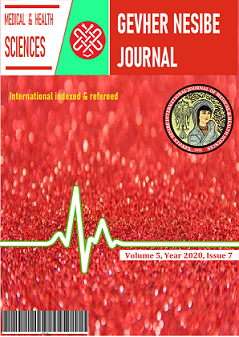Investigation Of The Tendencies Of Health Professionals To Use New Treatment Methods In Terms Of Technology Accepted Model (Special Hospital Example)
DOI:
https://doi.org/10.46648/gnj.98Keywords:
Technology Acceptance Model, New Treatment Methods, Hierarchical Regression, Mediating EffectAbstract
In our age, innovations in information and technology reveal techniques and methods that make life easier for people and contribute to improving the quality of life in both production and service sectors. New techniques and methods used in preventive, curative and rehabilitative health services provide convenience, benefit and efficiency in the diagnosis and treatment processes of health professionals, while less cost, pain, medication and risk for patients, treatment, recovery and normal life it enables shorter turning times. In order to obtain maximum efficiency from these innovations; it is especially important that practitioners' willingness, belief, attitude and intention towards use are positive. In this study, the attitudes and behaviors of healthcare professionals towards new treatment methods are examined within the framework of the Technology Acceptance Model. For this purpose, 132 questionnaires were applied to health professionals who provide health services in a private hospital, and the data obtained were analyzed with a statistical package program. As a result of the analysis, it was determined that healthcare professionals had a positive view on ease of use, perceived benefit, behavioral attitude and intention, and there were significant differences between the groups in terms of some socio-demographic characteristics. It has been determined that ease of use has a positive effect on perceived benefit, behavioral attitude and intent, perceived benefit on behavioral attitude and intent, and behavioral attitude on intent. In addition, it has been determined that perceived benefit has a partial mediating effect between ease of use, attitude and ease of use and intention, and attitude has a partial mediating effect between ease of use and intention.
Downloads
Published
How to Cite
Issue
Section
License

This work is licensed under a Creative Commons Attribution-NonCommercial 4.0 International License.


